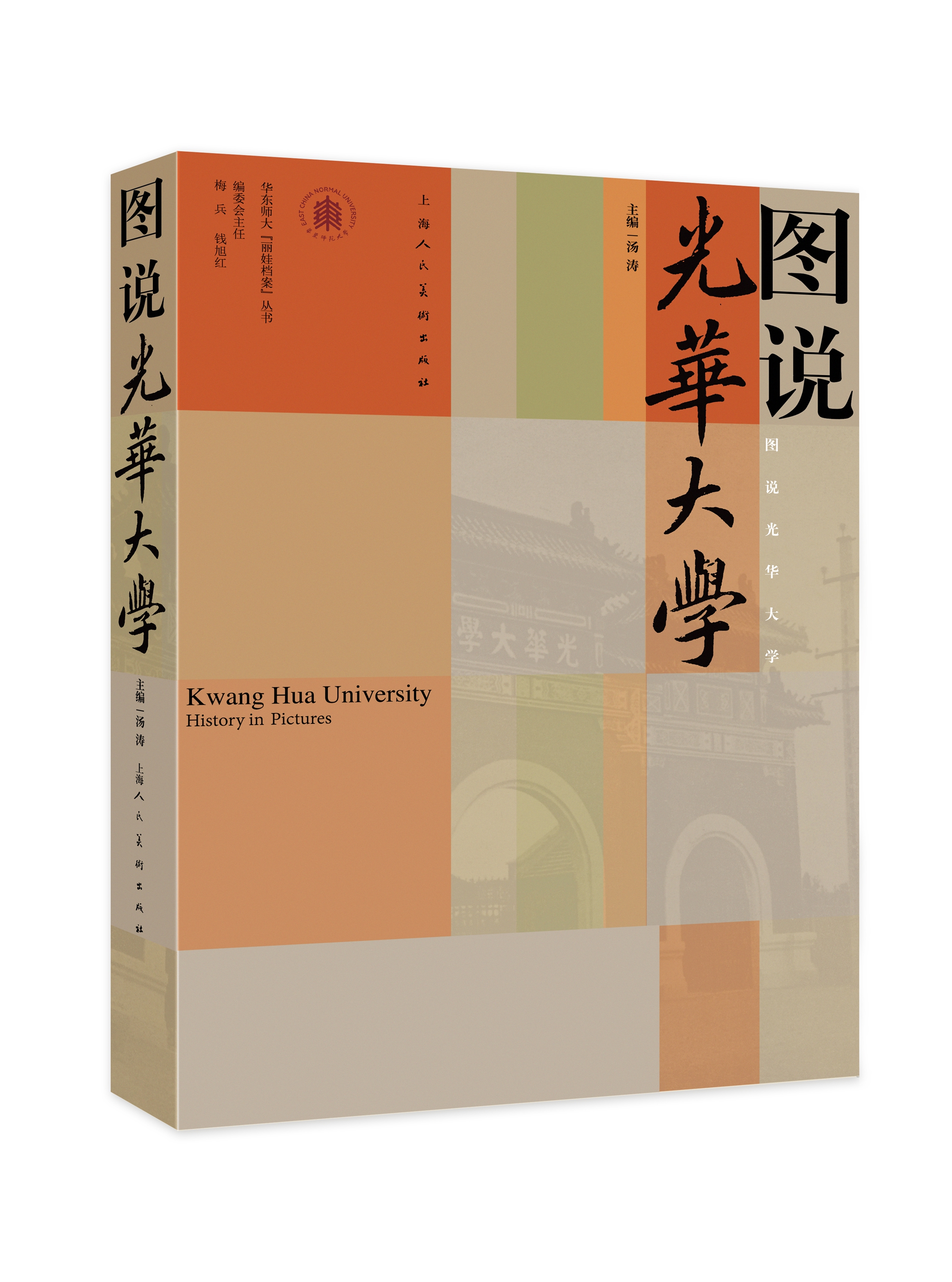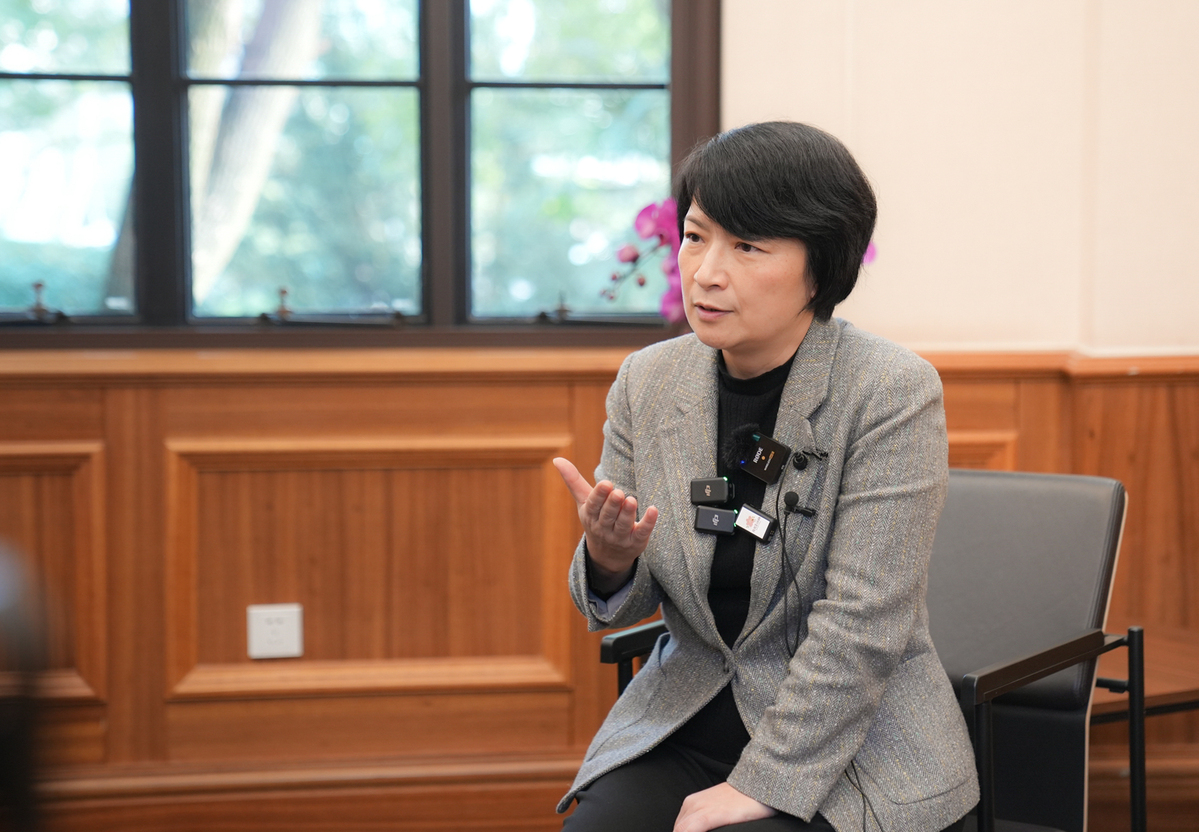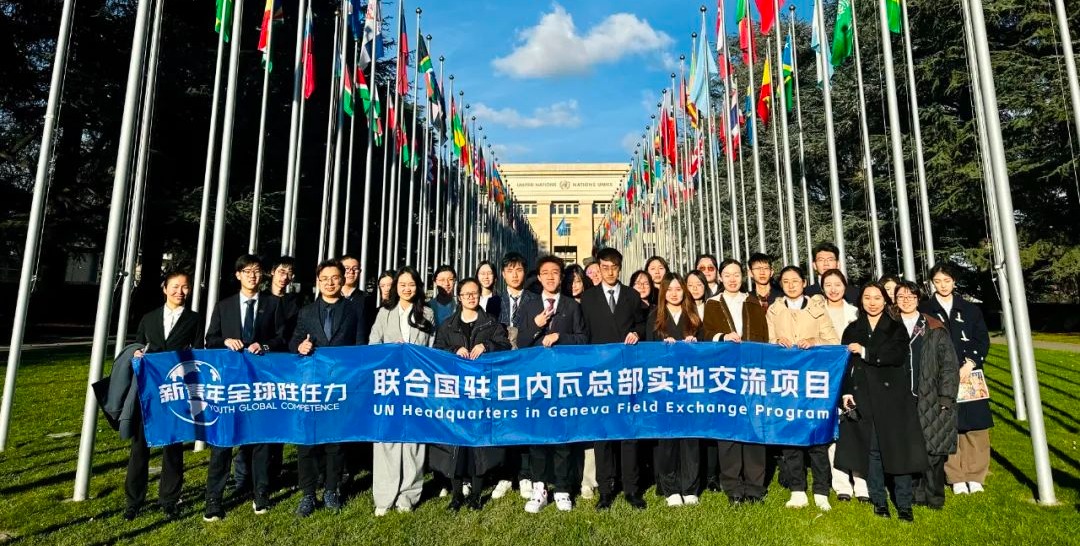A research team led by Prof. Zeng Heping with the State Key Lab of Precision Spectroscopy successfully conducted a new study on ultrafast lasers by generating breathers in a mode-locked fiber laser.
In an essay on the study “Breathing dissipative solitons in mode-locked fiber lasers" published by Science Advances, a sub-journal of Science, in November this year, ECNU was the first unit contributor to the essay, while the Aston University of the U.K. contributed to the work. Prof. Zeng Heping was the only correspondent author and associate researcher Peng Junsong was the first author.

Prof. Zeng Heping (left) and first author associate researcher Peng Junsong.
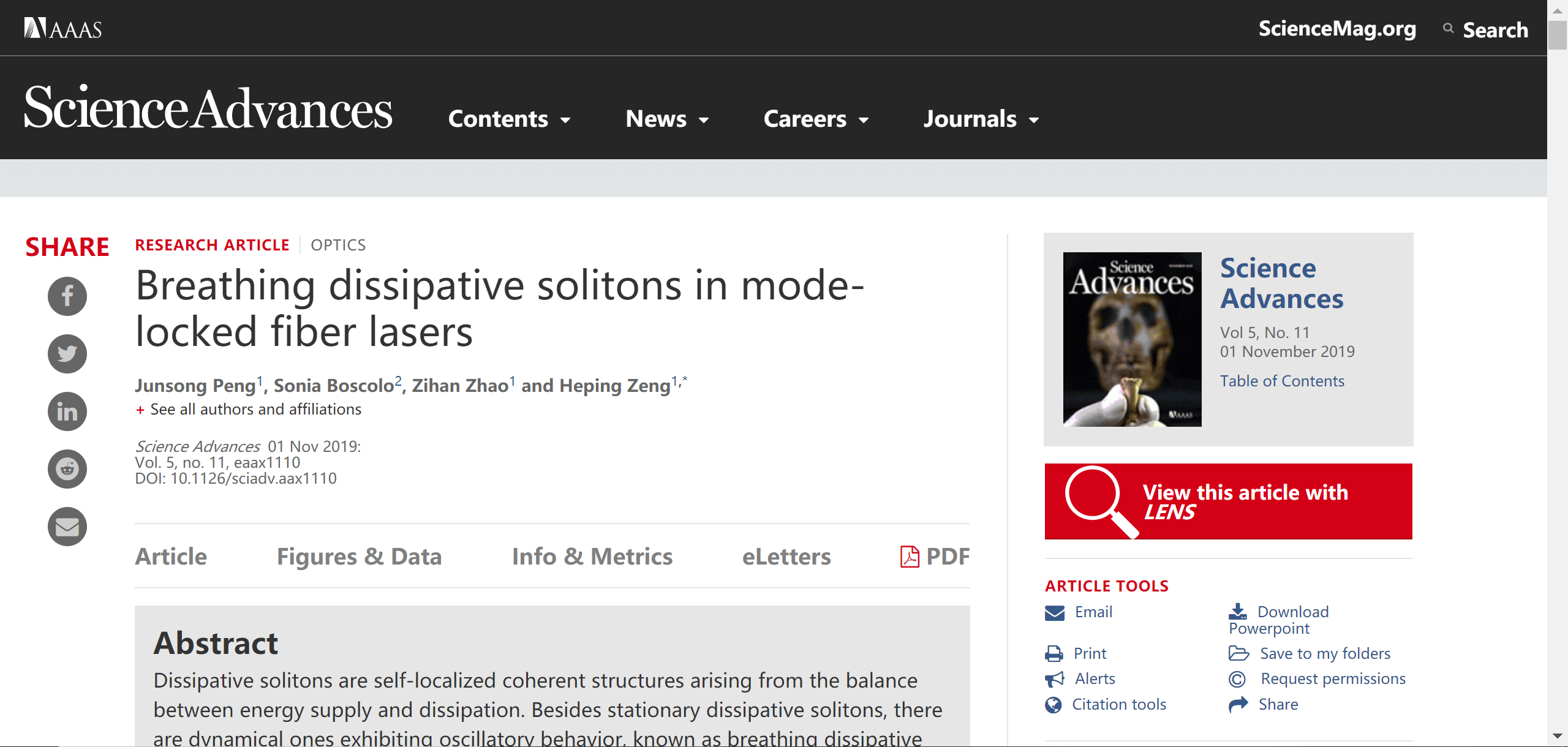
The research team's research results are published by Science Advances, a sub-journal of Science.
In the study of nonlinear optics, Solitons have been the result of the diffraction/dispersion effect balanced by the nonlinear effect during the propagation of a laser-beam. Generally speaking, solitons are wave packets that do not diffuse during transmission. Unlike silitons, the size of the breathers change periodically during the transmission process, similar to the way people exhales and inhale air.

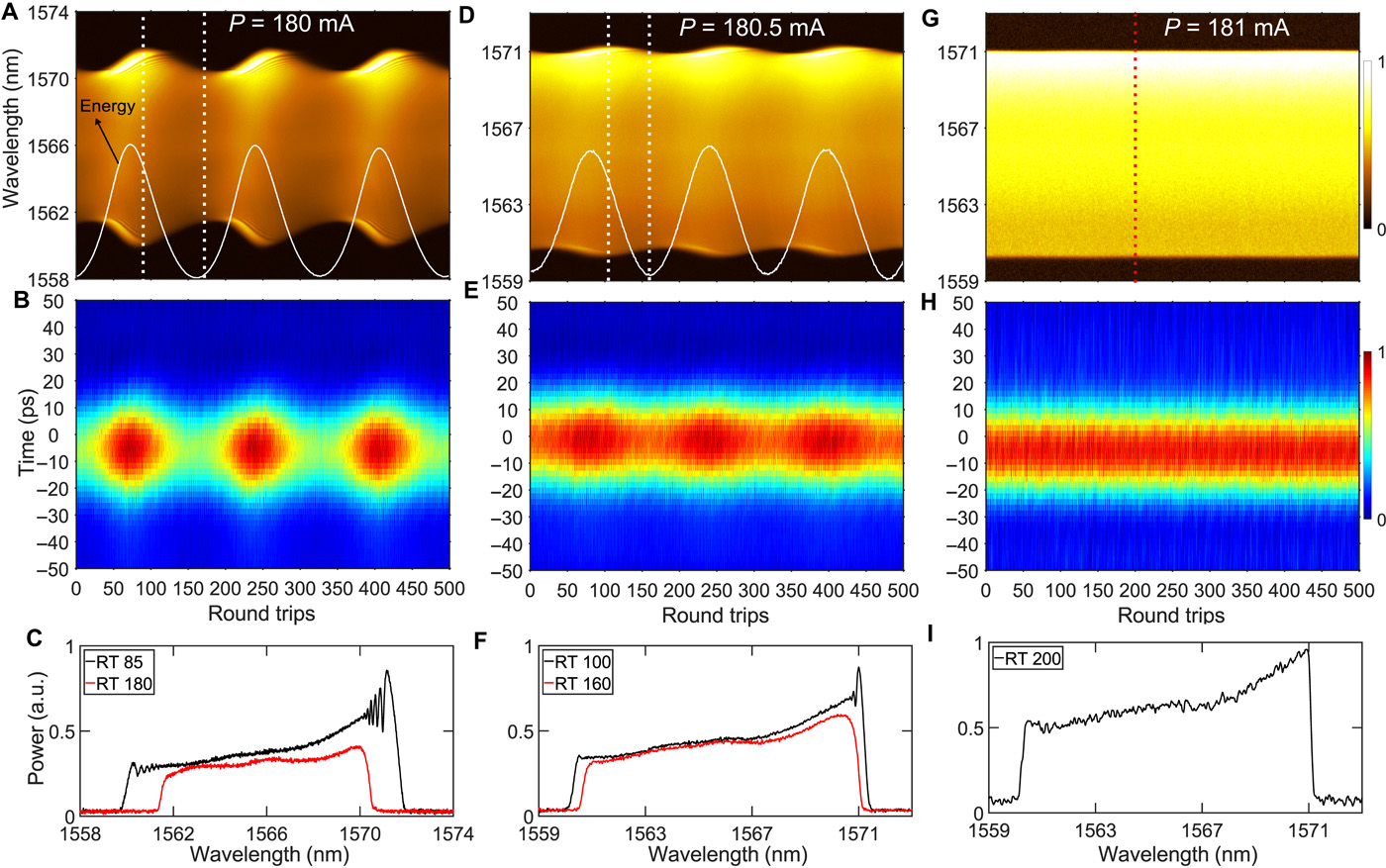


First author associate researcher Pen Junsong guides his undergraduate student in the lab.
Due to the inherent relationship between the nonlinear wave of the breathers and the many nonlinear phenomena, it is helpful to understand such extreme phenomena as rogue wave, turbulence, hurricane and tsunami, which has attracted wide attention throughout the academic community.
Significantly, the ECNU study established a universal and reliable method for generating breathers in a laser study for the first time.
Copy editor: Joshua Mayfield, Guo Wenjun
Editor: Zhang Linlan Zhang


